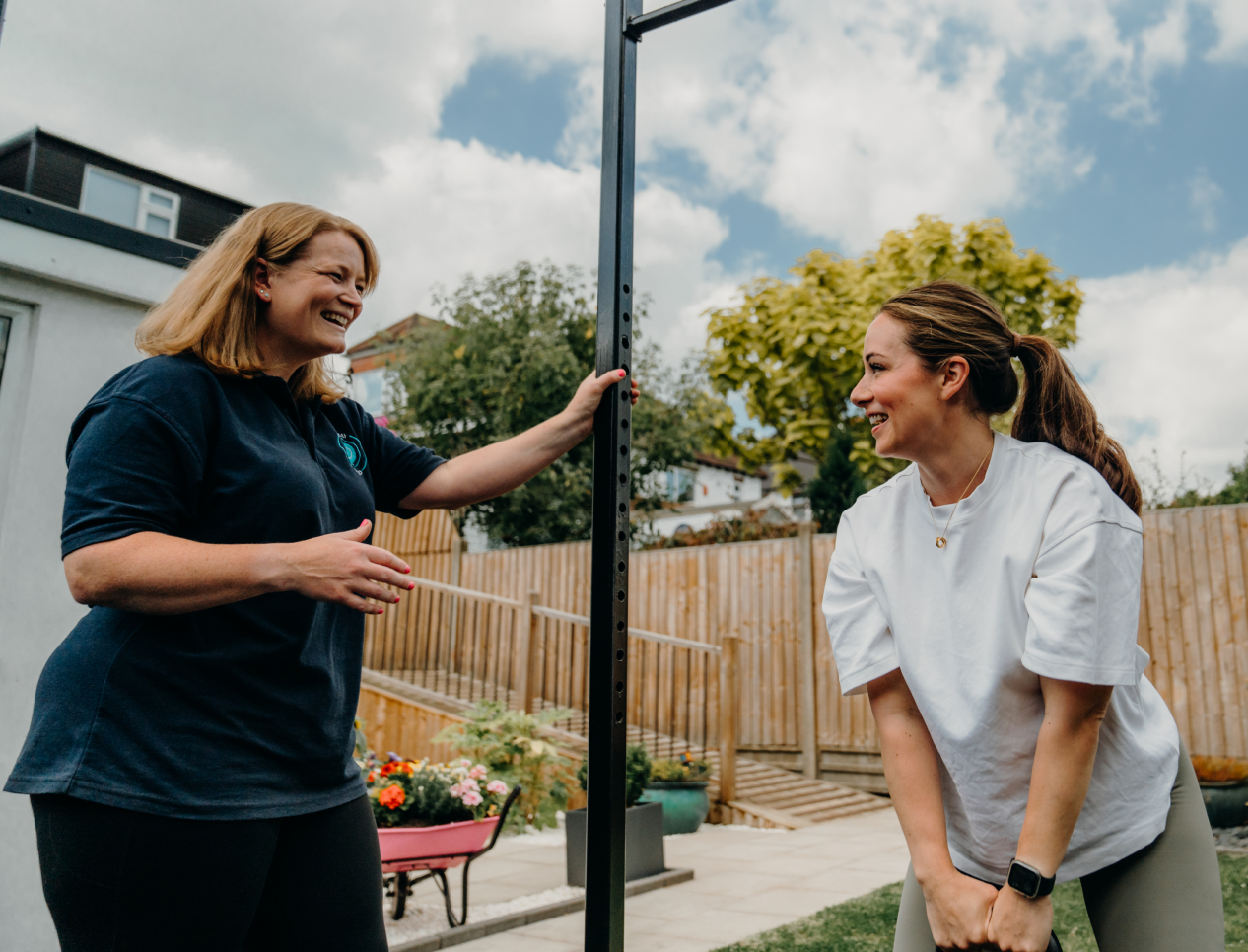Pelvic Health Physio in Worcestershire
For the women
Please see below for the range of conditions that we treat, this list is extensive but not exhaustive



Women’s Pelvic Health Assessment
This is your chance to be listened to, each assessment is individual and comprehensive.
Follow Up Appointment
If further treatment and guidance is needed, a follow up appointment is recommended.
A follow up appointment is for those patients that have been seen in the last 12 months by one of our clinicians. If you have been seen over 12 months ago please do book in for an intial assessment.
Symptoms we treat for women
Stress incontinence is a type of urinary incontinence where urine leaks out during activities that increase pressure inside the abdomen, such as coughing, sneezing, laughing, exercising, or lifting something heavy. It occurs when the pelvic floor muscles that controls the bladder are weakened, often due to childbirth, surgery, aging, or hormonal changes.
Treatment consists of pelvic floor strengthening exercises, abdominal core exercises and bladder and lifestyle advice
Recovery after gynaecological surgery varies depending on the type of procedure, surgical approach (e.g. open, laparoscopic, or vaginal), and individual health factors. Generally, recovery involves a period of physical rest, gradual return to activity and pelvic health physiotherapy if required.
Treatment consists of pelvic floor strengthening exercises, abdominal core exercises, scar tissue mobilisation, graded returning to exercise and advice and education
Urge incontinence is a type of urinary incontinence where a person experiences a sudden, intense urge to urinate, followed by an involuntary loss of urine, even if the bladder isn’t full. This condition is caused by involuntary contractions of the detrusor muscle (the muscle in the bladder wall), which may be triggered by certain stimuli such as:
- Hearing running water
- Arriving home (known as "key-in-the-door" syndrome)
- Cold weather or drinking caffeine/alcohol
Pelvic floor strengthening exercises, abdominal core exercises, bladder retraining, urgency suppression techniques and lifestyle advice.
Pelvic floor dysfunction occurs when the muscles of the pelvic floor are either too weak, tight, or not working in coordination. Dysfunction can lead to symptoms like urinary or fecal incontinence, constipation, pelvic pain, or a feeling of heaviness or pressure. It can result from childbirth, surgery, aging, trauma, or chronic straining.
Treatment consists of pelvic floor strengthening exercises, manual therapy, bladder and bowel retraining, education and lifestyle advice and relaxation techniques.
Overactive bladder is characterised by a frequent and sudden urge to urinate, which can be difficult to control. It may lead to involuntary urine leakage (urge incontinence), frequent urination (typically more than 8 times in 24 hours), and waking up multiple times at night to urinate (nocturia). It can occur when the bladder muscles contract too often or involuntarily, even when the bladder isn’t full.
Treatment consists of bladder retraining, pelvic floor strengthening exercises, urgency suppression techniques and lifestyle advice
Pelvic girldle pain is a common condition in pregnancy involving pain in the joints and surrounding muscles of the pelvis. Symptoms include pain in the lower back, hips, groin, or thighs, especially with activities like walking, climbing stairs, turning in bed, or standing on one leg.
Treatment consists of individualised exercise program, manual therapy, postural education and pain management strategies.
Dyspareunia (painful intercourse) is persistent or recurrent pain during or after intercourse. The pain can be superficial (at the vaginal opening) or deep (felt in the pelvis or lower abdomen). It can result from physical causes such as pelvic floor muscle dysfunction, vaginal dryness, infections, endometriosis, or scar tissue, as well as psychological factors.
Treatment consists of pelvic floor muscle rehabilitation, dilator therapy, relaxation techniques, education, desensitisation techniques and graded exposure advice.
Sexual dysfunction refers to difficulties that prevent an individual or couple from experiencing satisfaction during sexual activity. It can affect desire (libido), arousal, orgasm, or cause pain during sex. This may include low sexual desire, difficulty becoming aroused, inability to achieve orgasm, or dyspareunia (painful intercourse). Causes can be physical or psychological.
Treatment can consist of pelvic floor strengthening exercises, manual therapy, education and body awareness, relaxation techniques and desensitisation techniques.
Pelvic pain refers to discomfort or pain that occurs in the lower abdomen or pelvis, which may be persistent or intermittent. Pelvic pain is often related to conditions like endometriosis, ovarian cysts, pelvic inflammatory disease, or menstrual cramps.
Treatment consists of pelvic floor strengthening exercises, manual therapy, myofascial release, relaxation techniques, stretching and mobilisation and education around pelvic pain.

What our clients say
Aenean lacinia bibendum nulla sed consectetur. Vestibulum id ligula porta felis euismod semper. Aenean lacinia bibendum nulla sed consectetur.

Jenny

Rebecca

James
Frequently asked questions
Yes - there are spaces for 2 cars on the driveway. If there are already 2 cars on the driveway, please wait in your car until the previous patient has finished and left. Laura often waits at the gate anyway.
If you have an idea as to when your period is due, it may be not be appropriate if you are on days 1 or 2 or your flow is heavy. But a light flow is absolutely fine, there are period products in clinic you can access and a separate bathroom.
There is a bathroom in the clinic, patients do utilise this often.
There are ramps all the way to the clinic door, the ramps have non slip bars and there are hand rails along the way.

We’re waiting to treat you

